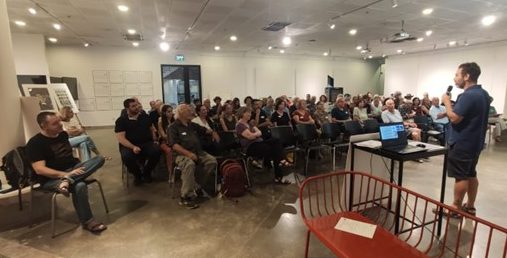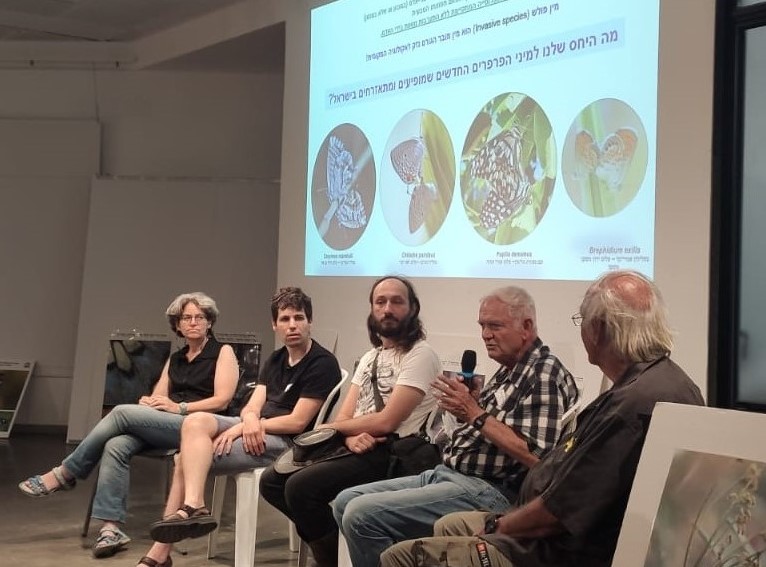The Steinhardt Natural History Museum and the Israel Center for Citizen Science closely collaborate with one of Israel’s oldest and leading citizen science initiatives – the National Butterfly Monitoring Program. On Friday, September 20, 2024, participants in the program gathered for the 41st annual meeting of the Lepidopterists’ Society, hosted at the Faculty of Architecture at the Technion. In addition to a pleasant social gathering, the annual conference provides an opportunity to stay updated on research findings and innovations within the monitoring scheme.

Among the lectures presented, butterfly monitors heard from Dubi Benyamini, chairman of the association, who discussed the hidden butterfly species in Israel. He also highlighted the importance of monitoring areas impacted by fires, which have unfortunately become more frequent in the past year. Dubi urged the monitors to adopt a monitoring trail in both burned and unburned areas (for comparison) to track the recovery of vegetation and butterfly populations over the next 5-6 years. Prof. Assaf Schwartz also delivered a lecture on the connection between butterflies, affinity with nature, quality of life, and nature conservation. This was followed by a lively discussion among participants about the new species appearing in Israel, such as the Cycad Blue, Geranium Bronze, and Lime Swallowtail – are they welcome guests or infiltrators?

Leah Benyamini presented a summary of five years of data from the Big Butterfly Count, while Achiad Sade shared insights that can be derived from this extensive data collection. Dr. Tomer Gueta, Director of the Israel Center for Citizen Science, introduced the new center and BioCollect – a data collection and presentation system currently being developed at the center. This system will soon replace existing applications for reporting purposes by butterfly monitors. Dr. Orr Comay presented the butterfly findings from the State of Nature 2023 report, and Zohar Afek shared the results of her thesis research on trends in the threatened species Tomares nesimachus and Apharitis cilissa.
After the lunch break, Gilad Weil from the Nature and Parks Authority presented innovations in the distribution limits of butterfly species in the desert region. Dr. Tzvika Avni shared insights from the association’s annual tours across the country – reflecting on successes and offering perspectives for the future. Dr. Racheli Schwartz-Tzachor provided a taste of of the African monarch (Danaus chrysippus) in her lecture on chemical communication, highlighting the interactions between butterflies, plants, and other ecological partners. Finally, the monitoring program was discussed in relation to climate change and the current challenges facing Israel.
The conference was an interesting and fruitful variety and a wonderful expression of a central principle in citizen science – returning the information to the participants. Sharing the results and findings with the mentors is an important part of the citizen science process, and it enables the understanding of the meaning of the efforts made throughout the year and their contribution to important scientific discoveries.
Photograph of the subject image: Yael Orgad, iNaturalist